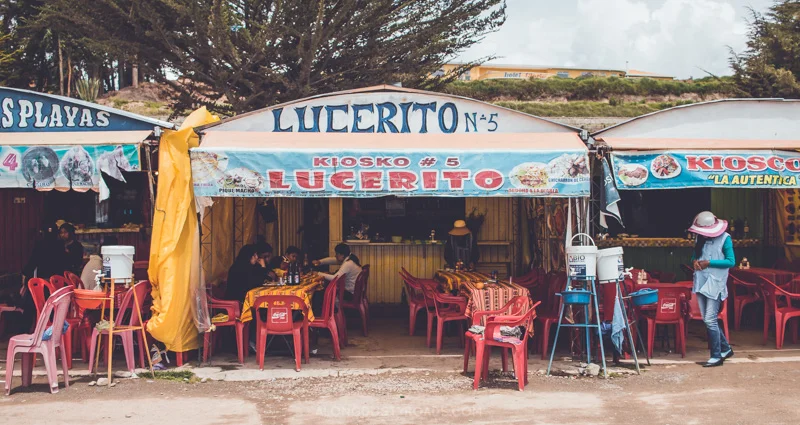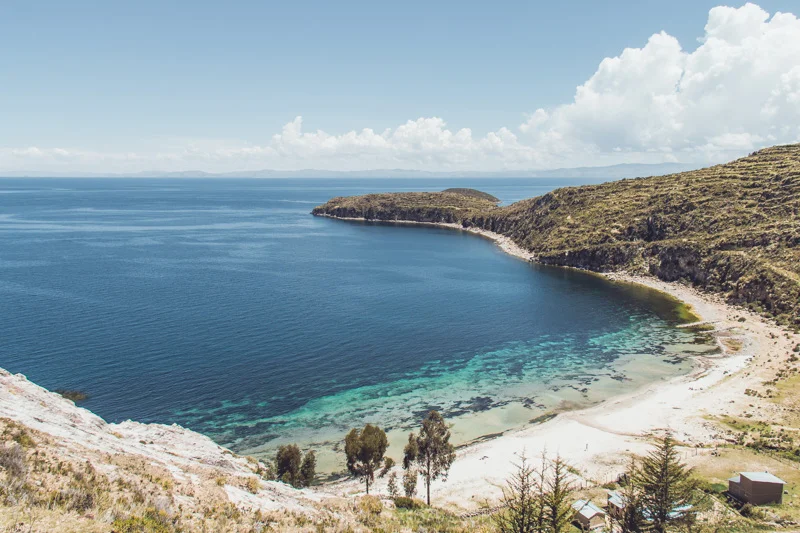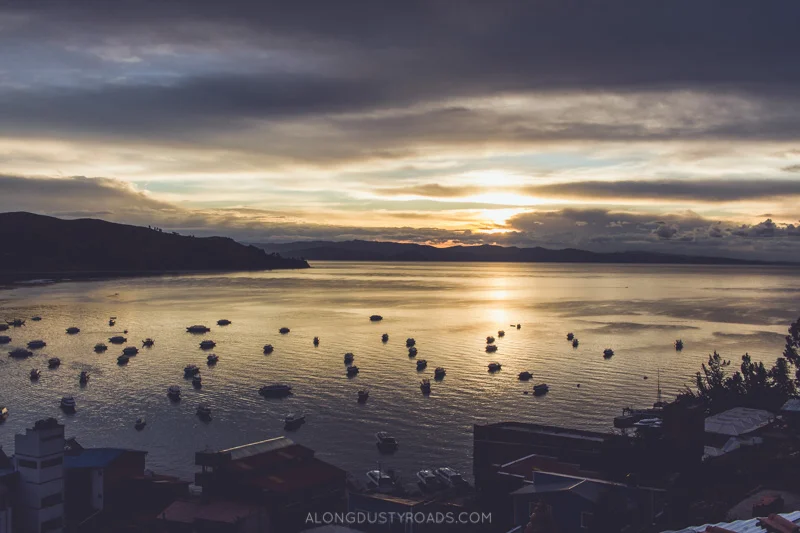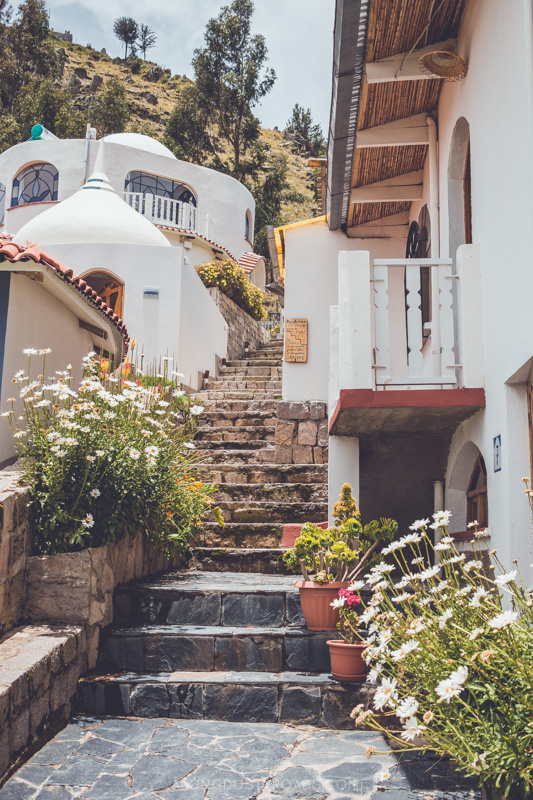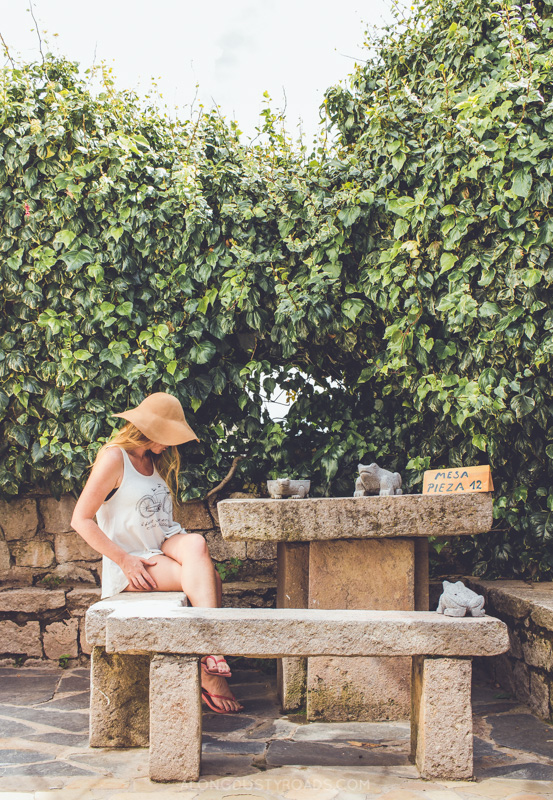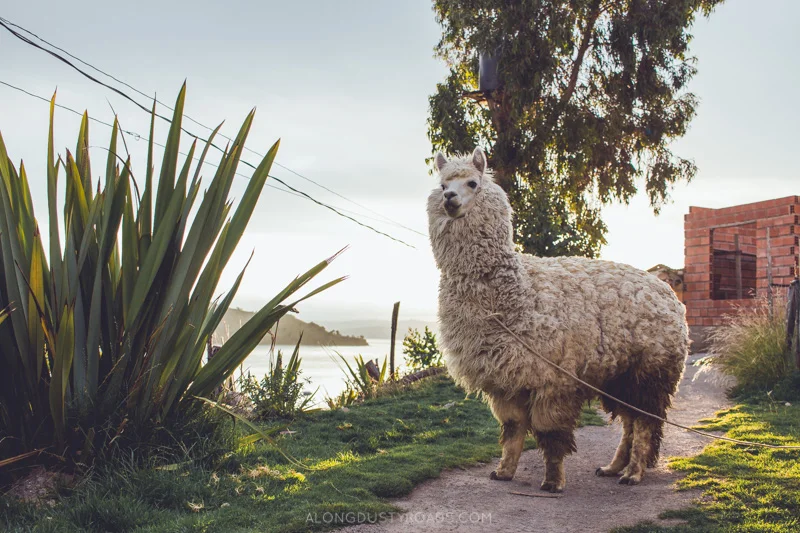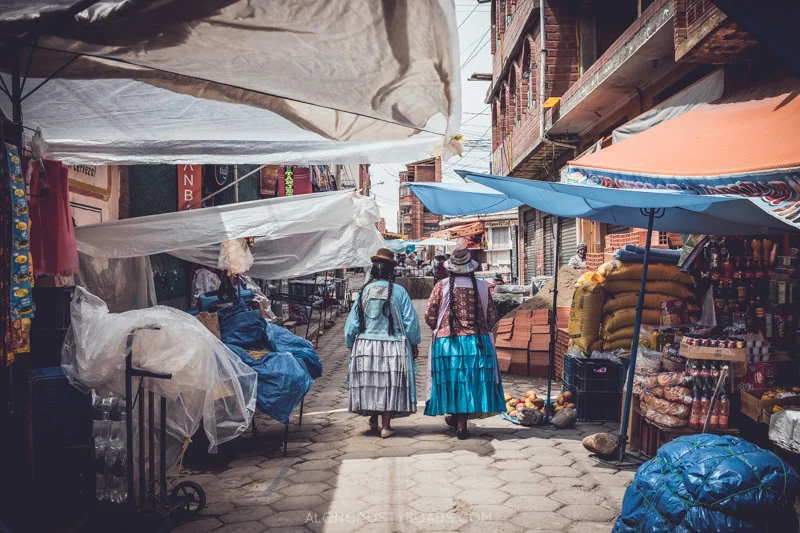On March 23rd each year, Bolivia mourns the day it lost the sea.
Solemn parades are held in the administrative capital, led by a national naval force which, perhaps, has the least seaworthy legs amongst any navy. These land-loving sailors and their presence in the parades are however symbolically important for Bolivians; they represent the hope of regaining that which it lost to Chile in the 19th century 'War of the Pacific'.
A sense of national loss and injustice is a prevalent and recurring theme in this country's story; it has been at the wrong end of most land and resource struggles in its history. The Spanish stole their silver and the lives of eight million in Potosi; the Paraguayans took most of the 'Chaco' region; the prosperous rubber producing region was ceded to Brazil whilst Peru gained territories in the north without even a struggle. Yet, with the 'stolen' sea in the Litoral region, there remains a belief that Bolivia may, finally, end up with a victory of sorts; a victory which is "seen as a panacea for the nation’s woes."
Within our first few hours in the country, the present day relevance and political capital attached to a century old issue, was made very clear. After a tortuously long wait to cross the border we sat down for lunch in a small cafe next to the bus terminal. Here, on a ancient TV in a dusty corner, familiar faces appeared. Evo Morales stood alongside European heads of state; they all agreed that Chile should grant unfettered maritime access to its small, poverty-ridden neighbour. We asked our waiter a few questions about this, and were treated to a five-minute treatise on historical injustice, the importance of the sea to Bolivian development, and how the International Court of Justice was going to make things right soon. He wasn't the only one like that.
And yet, with maritime mourning so deep-set within the national psyche, it could easily be forgotten that, between Bolivia and Peru, lies one of the most magnificent bodies of water we've ever seen. So vast, so celestial and so blue that, without knowing it, the first-time visitor looking out from their bus window, may just think it was, actually, a sea.
At 3,800 metres above sea level (yep, even the lakes are at high altitude in Bolivia), Lake Titicaca is one of the 'largest, highest and deepest lakes in the world'. For us, it's also one of the prettiest in all of South America.
For those visiting Bolivia, it's unmissable and, if you're entering from Peru, an excellent introduction to the country. The best place to base yourself is the town of Copacabana: although it isn't the prettiest place and is a tourist hub, it's got a pleasant environment, offers good backpacker accommodation and eating options, and is ideally located for you to make the most of your time by the shores of the lake.
Things to do in Copacabana, Bolivia
#1 dine out on trout
Sure, there are plenty of restaurants serving up pastas and pizzas, as well as the eternally present rice and meat option, but if you're in Copacabana, there's pretty much only one thing you should order. The women running the colourful lakefront stall restaurants know EXACTLY what they're doing and they cook a mean plate of trout!
Curiously, the trout consumed by the literal bucketload in Copacabana is not native to the lake; they are actually the progeny of North American trout introduced here in the 1930s. Unfortunately, this 'outsider' species' growth in the lake is responsible for the extinction or endangerment of the fish which were native to the lake (one feels there's a cheap joke about North American influence in South America here, but we'll not make it).
Our pick of the restaurants? Skip the almuerzo deals on the main street at lunchtime (you only get a small bit of trout with those) and eat out in the evening at a stall by the lake. Although the lakefront promenade in Copacabana is a big let down (think garish pedalos, trash and very little beautiful) these restaurants offer excellent value and have a nice character to them. For just $25 Boliviano (£2.50), you can indulge in a large fish, rice, salad and a side of papas fritas. The stalls and menus are all quite identi-kit, so pick one which looks busy with locals or that you like the look of (and if in doubt, go for Lucerito's). Large picture menus show the different options - for example trout in a tomato sauce or coated in garlic - but our recommendation is the trucha a la diabla, a deliciously spicy dish.
#2 visit isla del sol
An island inhabited for centuries? White beaches? Crystal clear waters? No motorised traffic? Authentic indigenous culture? Gorgeously verdant hiking opportunities? Donkeys?
Is it any wonder why so many people fall in love with Isla del Sol? Set a two-hour hour boat ride away from Copacabana, travellers can choose to spend a night or two on this beautiful island or do as we did and just take a day-trip. Whichever option you choose, you won't be disappointed.
Make sure you check out our guide to the island to help plan your trip and get some inspiration.
**Update May 2017: There has been an on-going dispute between the north and south sides of Isla del Sol regarding tourism revenues and accessibility - according to reports this means boats are unable to go to the north and tourists are restricted to visiting the southern end of the island. Please keep us updated on the situation in the comments section so we can keep future travellers informed.**
**Update March 2020 | We have been informed by a number of readers that the the northern section of Isla del Sol is still off limits to visitors. We’d advise checking with your accommodation for up to date information or checking out our guide to Isla del Sol.
#3 make a pilgrimage (or see other people making theirs)
Unlike many others, we chose to visit Copacabana in the wet season - there's really not supposed to be that many people around. So, you can imagine our surprise when we stepped off the bus, the streets were full of tourists.
We eventually discovered, we had arrived in Copacabana during one of the most important religious festivals of the year - the Festival of the Virgen de la Candelaria - where thousands of Bolivians descend upon the town in the hope of a miracle, granted by a an ancient statue of the Madonna.
The festival, held every 2nd-5th February is the largest pilgrimage in the country and, should you be arriving from Peru, a great introduction to Peruvian culture - just make sure you book ahead!
Housed inside the pretty white cathedral visitors can visit the Virgen at any time of the year, as well as the attached museum.
Related to the town's status as a pilgrimage site, you will also see one of the most peculiar Bolivian phenomenons in Copacabana: the blessing of cars.
Every day outside the Cathedral, car owners of all backgrounds and wealth, decorate their cars with colourful banners, flowers and, on occasion, hats whilst the vehicle is blessed by a priest and doused in champagne (or Coca Cola). It's a perfect exhibition of a religious trend across Latin America, namely the meshing of native faiths and traditions with the imposed Catholicism of the Spanish.
So, when you inevitably see a lavishly decorated 4x4 driving around town, now you know why! And, although a culturally and visually interesting practice, we must say that it frustrates us both hugely. The reason? Bolivian drivers are some of the worst we've encountered in all of Latin America and a practice such this - to give your car luck and keep it safe and hope for divine protection - appears to be given more credence and respect in the country than, you know, wearing seat belts, adhering to speed limits and just trying to drive in a safer manner. When our collectivo driver in Corioco rounded a blind corner on the wrong side of the road, in fog and rain, at 60 miles per hour, we can't say we placed a lot of faith in his banner - proudly displayed above his head - that the car had been blessed that year in Copacabana.
#4 hike the beautiful countryside
The countryside around Copacabana is peaceful and verdant and probably the least appreciated aspect of travel to this part of Bolivia, given that most travellers are focussed on spending time on Isla del Sol. However, those who make the effort will find small fields of quinoa and potatoes tended by friendly old campesinos, sleepy villages by crystal blue waters and the odd pack of llamas. Plus some jaw-dropping, uninterrupted views of the lake which few others will see.
The challenging but manageable day hike to Yampupata, along deserted trails, is an excellent way to discover some of the most isolated stretches and to get properly off the beaten path in a town which has its fair share of tourist traps (such as the floating islands).
We were both looking forward to doing this but the weather, our schedule and a botched border crossing conspired against us, so we were unable. However, for some lovely photos and a great guide on the trek, read this post by the Globetrotter Girls.
#5 catch the magnificent sunsets
Neither of us will forget the sun setting over Lake Titicaca and we doubt you will either.
Every evening brought a different light, cast a different hue and made us feel a different emotion. And every night was spectacular.
We were privileged enough to be staying the excellent La Cupula, which allowed us to enjoy the sunset from either their garden or from the comfort of the huge bay window in our room. However, an alternative if you stay elsewhere is to trek up to Cerro Calvario (about 30 minutes walk to the summit) which gives a terrific vista over the entire town and the lake in all its glory. The Stations of the Cross, built on this Cerro in the 1950s to give the thousands of pilgrims another religious attraction, can also be viewed on your walk up as well as 'witchdoctor' consultations where miniature objects of that which you desire, are blessed.
where we stayed
After our first night in the only accommodation with a vacancy, we were both delighted to check-in a the beautiful Hotel La Cupula. Set a little way up Cerro Calvario, but easily reachable on foot from the main square in town, it has an unbeatable peaceful and private setting overlooking the bay of Copacabana. For the sunset views alone, we'd recommend this place, but there is so so much more that we loved about it.
Against the orange-brick mish-mash of buildings which dominate the rest of town, the Arabic influenced design of the private rooms and main building at Cupula stands out like an oasis in the desert. Our personal suite, including private cooking facilities, was simply beautiful, with a lot of thought and investment put into the design. The best part was probably the view from our sofa - through three huge stained-glass windows, the entire town and lakeshore opened up before us, but the comfy bed, decadent shower and indoor fire for the chilly nights all added up to make it a flawless experience.
For a travelling couple looking for a romantic place to stay, and happy to spend a little extra on affordable luxury, then we'd certainly recommend checking out one of the many private suites. However, La Cupula also offers great options for budget travellers, with comfortable doubles starting at $28-30 USD or singles at $19 USD. If you take up that option, then you also have access to additional excellent facilities like a well-stocked kitchen, large garden area (great views, hammocks and a slack-line), cosy indoor social areas and wealth of free tourist information.
And, last but not least? Four adorable alpacas live permanently on-site mowing the grass - what more could you ask for? Find out prices and availability on Hostelworld and Booking.com.
useful information
There are no supermarkets in town, so your best bet is to practise your Spanish at the daily market in town, which is a few blocks from the main plaza. Don't be surprised if the prices being charged to you seem a little high as we were certainly ripped off quite a few times - shop around to try and get a gauge of what's fair.
The main tourist street in Copacabana is Av. 6 de Agosto. You'll find no shortage of eating-out or drinking options here, often with Argentinian hippies trying to charm you inside. Breakfast out at these places is best avoided as the fare is very over-priced (around 30 Bolivianos for a basic plate), but they are worth checking-out at night (if you don't take our trout recommendation that is!)
See those buckets of giant puffed corn which smell amazing? Yep, it's literally the biggest popcorn in the world and is DELICIOUS! Make sure to get yourself a big bag for around 5 bolivianos.
Looking for a nice place to hang out? Restaurant Bambu on Av.6 de Agosto is lovely for a coffee in its peaceful garden, whilst along the lakefront, there are a couple of nice bars/restaurants which have cool little rooftop hangouts with wifi and happy hour offers.
getting there / away
Transport links are regular and good. From La Paz, make your way to the Terminal Cementerio (note that this is NOT the main bus terminal) with a taxi. Several companies depart from here several times an hour, so simply catch the next one that's leaving. Quality varies between the buses available, but expect to pay around $30 B for the 3-4 hour journey. Note that at one point on the way to Copacabana you will have to exit the bus and buy a ticket ($2 B) for the brief boat ride across a section of the lake. Take your valuables and hand-luggage with you, as the bus is transported over the water on a separate barge. After a 5-10 minute wait, the bus will collect you on the other side.
If you are travelling to here from Puno in Peru, then make your way with public transport (3 hours) to the border with Bolivia. After your crossing, you will find collectivos waiting to take you the 15 minutes to Copacabana ($3 Bolvianos).
From Copacabana, you will find all the transport departing from Plaza Sucre. To cross the border with Peru, read our guide on transport, times and costs. Local buses to La Paz leave regularly (at least one an hour) and cost $25-30 Bolivianos, with a journey time of around 4 hours. These may drop you off at the main terminal in La Paz or at the Cemetery terminal (either way, we'd recommend you taking a taxi onward to your hostel).
And, remember, some of the best views of the lake are seen on this bus journey, so pick a good seat and stay awake!


